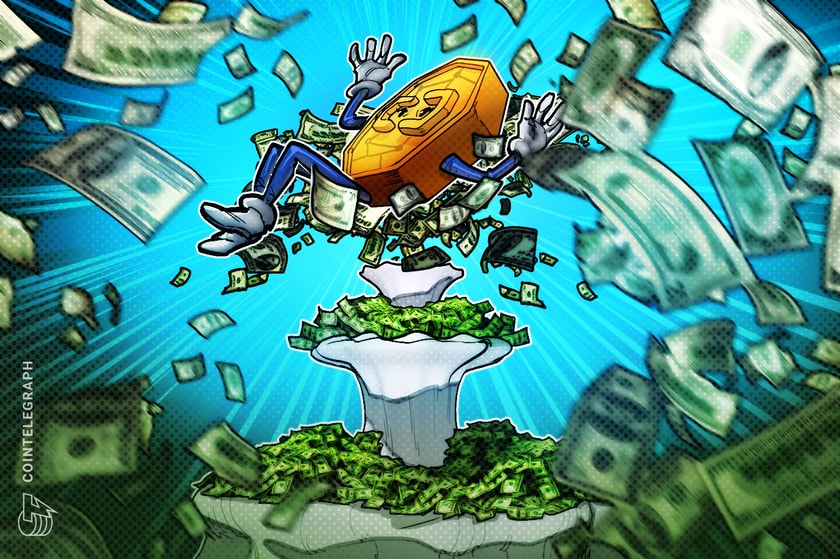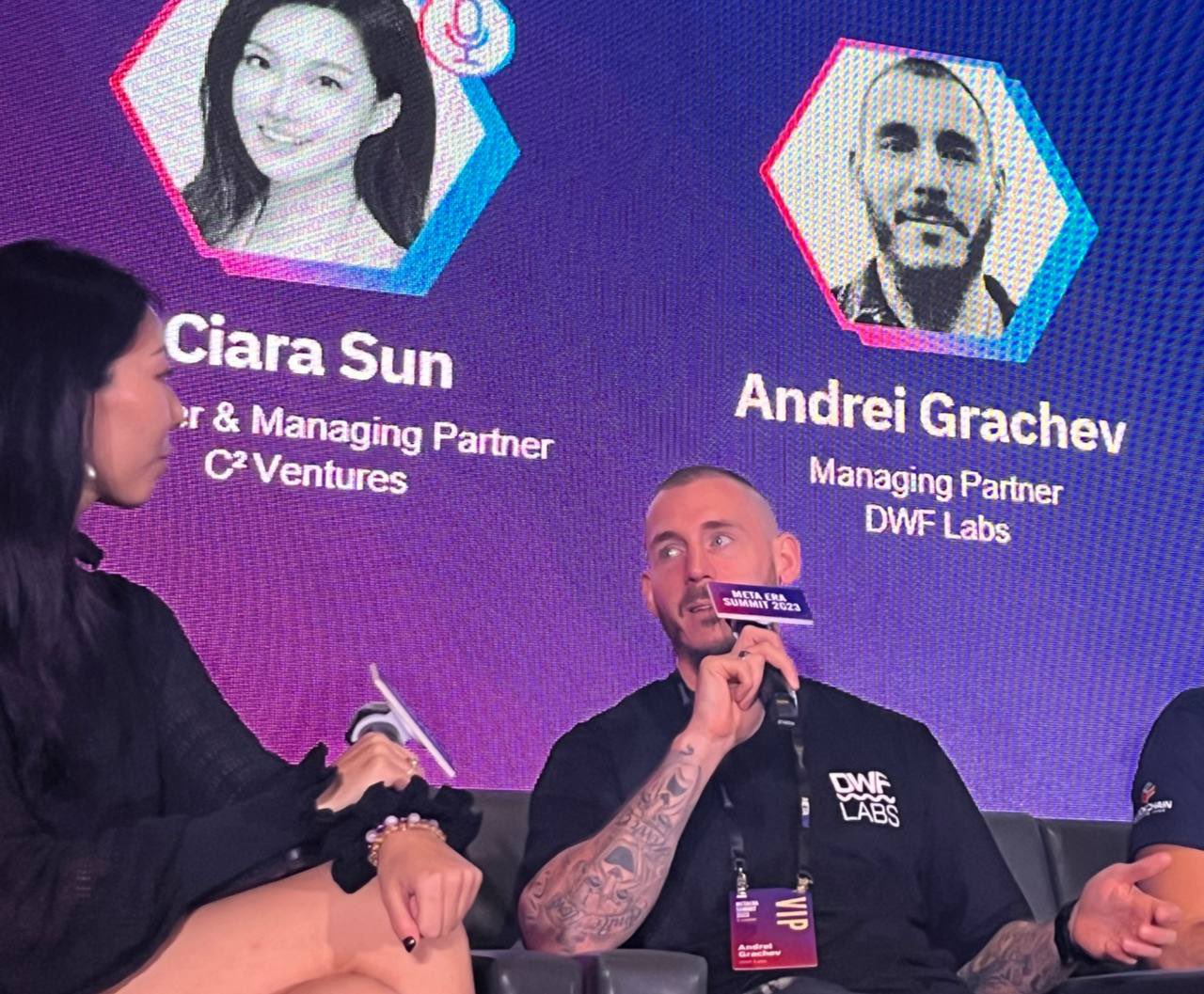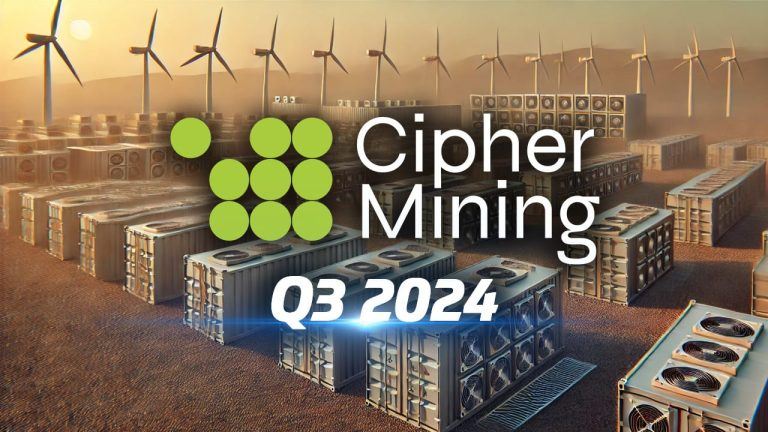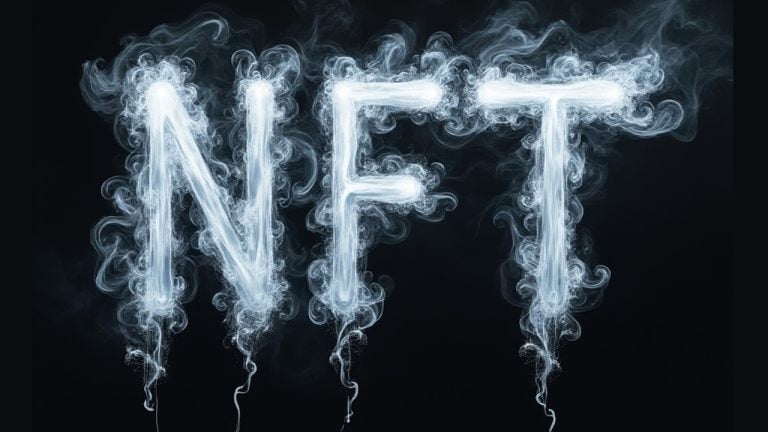
Crypto VC: Token investing and the next bull run with Digital Wave Finance

Cointelegraph sits down with Digital Wave Finance to talk about investment strategies and what could catalyze the next bull run.
Venture capital has been a key driver for myriad startups in the blockchain space. Founders know how competitive it can be to secure valuable VC funding that can keep the lights on and employees paid during the critical first days of a new project.
In a new interview series, Cointelegraph sits down with executives at some of the most active funds investing in the crypto space to understand their perspectives, hear about their successes and failures, and find out what gets them excited about a new project in the Web3 space.
This week, Cointelegraph spoke with Andrei Grachev, co-founder of crypto trading entity Digital Wave Finance (DWF) and managing partner of market maker and multistage Web3 investment firm DWF Labs. DWF Labs has been highly active since late 2022, having invested in the Telegram Open Network (TON), Orbs, Radix, Crypto GPT (now Layer AI) and others.
Cointelegraph: It feels like DWF Labs emerged from nowhere and started aggressively taking over the industry. Tell us more about the history of the fund and the background of the partners.
Andrei Grachev: DWF Labs started operating in late 2021, founded by experienced partners from DWF, a highly successful high-frequency trading entity that had been operating since 2018. We recognized the potential of blockchain technology and wanted to explore investment opportunities in the industry. After making several small investments and token allocations, we refined our investment strategy and risk tolerance. Since then, we have been actively investing in promising projects and providing long-term financial support on a regular basis.
CT: DWF Labs invests exclusively in tokens. Many players in the industry consider this approach to be market-making. Can you explain the rationale behind this decision and why you believe investing in tokens is the best approach?
AG: First of all, let me clarify that every project we work on has different deal components. While some involve pure venture investment, others may include token purchases. Over the past 12 to 18 months, we have seen an increasing number of market makers entering the investment space. While I cannot speak for the entire industry, it appears to me that market makers offer significant support to projects that is crucial to their growth.
For example, market makers typically have established relationships with exchanges, and they can help projects with listing introductions. However, it is up to the exchange to accept the recommendations or not. Another advantage of working with market makers is that they can provide liquidity support to tokens when it is needed. In other words, market makers offer value beyond just executing trades, and this is why we believe that investing in tokens is the best approach.
CT: How do you evaluate the risks associated with investing in tokens, and what steps do you take to mitigate those risks? Are there any particular metrics or criteria you use to assess the potential of a token?
AG: As a Web3 investment firm, we have developed various investment theses over time to evaluate the risks and potential of a project. While we cannot fully disclose our current investment strategy, we have identified several verticals that we are interested in supporting. On our website, we categorize our investments into nine macro-categories, allowing us to diversify our risks within each vertical by selecting a few projects with significantly different attributes.
For example, if we identify a growing vertical where multiple players are developing or building value, we look at the possibility of supporting more than one project. If a project has a clear emphasis on infrastructure, the next project we select might be more focused on the B2B side, and the next one on retail. This approach provides us with a comprehensive coverage of the spectrum of an industry vertical.
When evaluating the potential of a token, we use various metrics and criteria that are specific to each project and vertical. We analyze the market size, competition, team experience and track record, tokenomics, and community engagement, among other factors. We also conduct due diligence and consult with industry experts to ensure that the project has a solid foundation and strong potential for growth. While investing in tokens does carry inherent risks, we believe that a diversified approach combined with thorough research and analysis can help mitigate those risks and generate positive returns for our investors.
Portfolio companies
CT: What does the ideal portfolio company for DWF look like? What do you prioritize: The idea, personality of a founder, a team or traction?
AG: Our investment portfolio is diverse, but there are a few categories that stand out due to their weight in terms of the number of investments. Decentralized finance and trading, metaverse and GameFi, and infrastructure and enterprise are the categories that seem to have captured our attention the most.
When it comes to prioritizing investment factors, potential market adoption should be the primary consideration. This is because a great idea or product that doesn’t have a large potential user base will not be successful in the long run. Addressable market size is also an important factor, as it helps to determine the potential revenue and growth prospects of a company.
Recent: ETF filings changed the Bitcoin narrative overnight — Ledger CEO
However, even with a large potential market and a great product, the ability of the team to execute is essential for success. A talented and experienced team with a track record of success will increase the likelihood of successful execution and bring the product to market efficiently.

Finally, while buzz and hype can be useful indicators of market demand and potential, they can also be misleading and should be taken with a grain of salt. It is important to evaluate the underlying fundamentals and potential for long-term success rather than being swayed solely by hype or trends in the market.
CT: Among others, you invested in TON and EOS. Both projects have a complicated history and a controversial reputation in the industry. What exactly did you find attractive in these projects?
AG: We invested in TON and EOS due to their potential for market adoption and addressable market size. Both projects were highly ambitious and aimed to address fundamental issues within the blockchain industry, such as scalability and usability. We were also impressed with the teams behind each project and their ability to execute on their vision, despite the challenges they faced. While there were certainly controversies and setbacks along the way, we believed that these projects had the potential to make a significant impact in the industry, and we were willing to take the risk. Ultimately, our decision to invest in TON and EOS was based on a thorough analysis of their potential for long-term success, rather than their current buzz or hype status within the industry.
CT: One of your recent investments is Crypto GPT. What is that?
AG: As outlined in our investment thesis, we strive to mitigate risk by diversifying our portfolio within specific industry verticals. This approach allows us to balance potential profits with the possibility of losses. Our investment in Crypto GPT occurred during a period when we were supporting various AI projects. While the initial version of Crypto GPT may not have been impressive, we believed our investment could have facilitated further development and led to something innovative in the market. It is premature to write off the project entirely based on its current implementation. For example, the first iPhone did not have the copy/paste feature, but subsequent iterations improved upon the initial model. The Crypto GPT team is actively developing and launching new products, and we look forward to seeing the results in the long run.
CT: What is the best way for the startup to catch your interest?
AG: Our investment strategy is a combination of various assessment criteria, such as the team, market, traction, competitive landscape and more. As we receive a high volume of funding applications monthly, we prioritize projects that catch our attention with something unique and extraordinary. This is what we would have referred to as the USP, or “unique selling proposition,” in traditional marketing jargon. We value when projects showcase their strengths, whether it be in their community or traction, as it allows us to easily identify potential gems and initiate our due diligence process.
CT: What is your fastest-growing portfolio company?
AG: There are several fast-growing projects in our portfolio, making it challenging to focus on just one when highlighting them. However, some projects have managed to grow their communities tremendously, such as Yield Guild Games, which has accelerated the adoption of GameFi; Conflux, with its signature partnership with China Telecom; and Coin98, which has seen massive adoption in Southeast Asia. Notably, Synthetix is a groundbreaking financial primitive that enables the creation of synthetic assets. Syscoin has been working for years to perfect a solution to the blockchain trilemma, and Fetch.ai offers comprehensive tools for developing, deploying and monetizing applications.
CT: How do you find the best deals?
AG: I have to give credit to my partners and our team, who work tirelessly to stay informed and scout for new projects while evaluating the potential of existing ones. We also attend industry events to connect with the community, which is still very much connected through “decentralized human nodes.” These events provide us with an opportunity to network and expand our connections, which is crucial for discovering promising deals.
CT: Many big names — including a16z, Shima and others — are investing in Web3 gaming, but all the metaverse and gaming projects seem to be overestimated. Decentraland reportedly had just 38 daily “active users” at one point in a $1.3 billion ecosystem. What do you think about Web3 games and metaverses?
AG: We, like other VCs, are keeping a close eye on the Web3 gaming and metaverse spaces. While we see the potential for these projects to revolutionize the gaming and virtual world industries, we also acknowledge the risks and challenges they face. It is true that some projects have been overestimated, but this is a nascent industry, and we are still in the early stages of experimentation. As with any emerging technology, it takes time to develop and gain widespread adoption.
About the industry
CT: How will the industry change in the near future and in the long run?
AG: The industry has grown so big that it is hard to speak about it without diving deep into each of the verticals. For example, it would be impossible to ignore the tremendous impact that AI is bringing to the world. Also, the incredible growth of GameFi has already contributed significantly to growing adoption. And certainly, DeFi is here to stay.
Decentralized exchanges have been the talk of the day ever since FTX went bankrupt. More recently, there seems to be a renaissance of memecoins. There has been a tremendous amount of building behind the noise of token price. We are always interested in supporting builders. At the moment, we are particularly keen to support infrastructure projects, from layers to IoT and real-world assets. We believe that these projects will play a critical role in shaping the future of the industry.
CT: Some critics of token investing argue that many tokens are not real investments but speculative assets subject to price manipulation and volatility, which negatively influence the entire industry. How do you respond to this criticism, and what evidence can you provide to support the idea that token investing is a legitimate form of investment?
AG: Token investing is often criticized as a form of speculation that lacks legitimacy as an investment vehicle. However, tokens are attractive to both retail and institutional investors because of their liquidity. Tokens can be viewed as the next evolution of shares traded on a stock exchange. In traditional markets, the democratization of access to the stock market through platforms like Robinhood and eToro has given retail investors the ability to organize themselves into communities that can further their investment thesis beyond the market rationale. The growth of memecoins is a prime example of this community approach to crypto investment.

While some memecoins have evolved into projects with ambitious ecosystems, such as Floki, others exist solely as speculative tools. Ultimately, investing is about profit, and an investor who doesn’t want to profit is called a philanthropist. Therefore, token investing should be evaluated based on its potential for generating returns, as well as its potential risks and rewards. Some tokens will generate handsome profits based on their technological value, while others will thrive solely due to their growing community of enthusiasts.
CT: The recent collapses of FTX, 3AC and others didn’t add any trust or optimism to the crypto space, while recent events indicate that traditional financial institutions and the current financial system overall are in crisis. In your opinion, what’s the best way to overcome these challenges?
AG: Finance is a highly complex field, at a crossroads between the economy on the one hand and government regulation on the other. Financial institutions are a vital part of the economy in day-to-day terms, and it is unfortunate when such institutions fail to comply with regulations or intentionally implement malpractices.
As for overcoming challenges, there are a few approaches that could be taken. Firstly, increasing transparency and accountability within the industry is crucial. This can be achieved through regulation and self-policing by the industry itself. Secondly, embracing technological innovation and new business models could lead to more efficient and inclusive financial systems. Lastly, educating the public and promoting financial literacy is essential in building trust and confidence in the industry. Overall, a combination of these approaches could lead to a more resilient, trustworthy financial system.
CT: This is a fast-growing multibillion-dollar industry, but still, for the general public, it might look like something related to illicit activities such as money laundering. What can change this perception?
AG: This concern seems outdated, as over the past few years, there has been significant adoption of blockchain technology and Web3. Many portfolio companies have created a positive impact for communities globally. For example, World Mobile Token disrupts the trillion-dollar telecommunications industry by enabling connectivity for everyone through a sharing economy and distributing network ownership. […] It’s essential to focus on builders and the real value they bring to the world to dispel negative perceptions about the crypto industry.
CT: What topics in the industry are the hottest nowadays? Just 1.5 years ago, nonfungible tokens were everywhere. Now, every primary protocol has its own NFT marketplace but very few users. Are NFTs gone, or do you expect them to evolve into something? What’s the next big thing?
AG: Undeniably, NFTs took the world by storm, demonstrating that massive crypto adoption is possible. Although their initial use case was closely related to self-expression, NFTs represented a mere speculative tool for some. In other words, the use case was not the most solid to build upon, but it was indeed a good starting point. Now, we see many more innovative use cases in NFTs, and we are sure that many more will come very soon.
For example, with the advent of advanced AI engines for art creation, the ability to launch a new NFT collection is no longer limited to those with the technical skills to execute; rather, the opportunity has been democratized to empower anyone with an idea to execute rapidly and easily. This simplification and democratization is already spilling over into no-code development, gaming and entertainment more broadly, like music and filmmaking. Trading will also be significantly impacted by AI integration, and we are already seeing some projects emerging in this field.
CT: In your opinion, what could catalyze the next bull run?
AG: GameFi will continue to lead in mass adoption as the lowest-hanging fruit. What is particularly interesting will be to see how AI integrations bring into existence a new breed of extremely interactive gaming experiences. For example, AI-driven nonplayer characters will have emotions and personalities of their own and will interact with players far beyond their scripted scope of existence. Therefore, we should keep a close eye on how AI will impact all industries.
CT: There are alarmists who think AI will “steal jobs” and positive thinkers who are sure it will make our lives better and easier. What is your point of view? What significant changes can AI bring to the crypto industry?
AG: The idea that AI will steal jobs is real, but in more practical terms, people who know how to master AI integration will be replacing other people’s jobs. AI, on its own, is not going to steal anyone’s job unless someone programs it to do so. There might be many ethical repercussions related to the first outcome of AI integrations. It is not too far-fetched to imagine AI being regulated in a similar way to finance, to a certain extent.
Magazine: 6 Questions for JW Verret — the blockchain professor who’s tracking the money
As for the positive impact of AI, it has the potential to bring significant change to the crypto industry. AI can be used for advanced data analysis and predictive modeling, helping traders make informed decisions and identify market trends. It can also be used to enhance security measures, detecting and preventing fraud and cyberattacks. Additionally, AI can assist in developing more efficient and effective blockchain protocols, leading to faster and more scalable networks. Overall, I believe AI will play a crucial role in the growth and development of the crypto industry, and its impact will be mostly positive if implemented ethically and responsibly.
Go to Source
Author: Regina Sadykova









